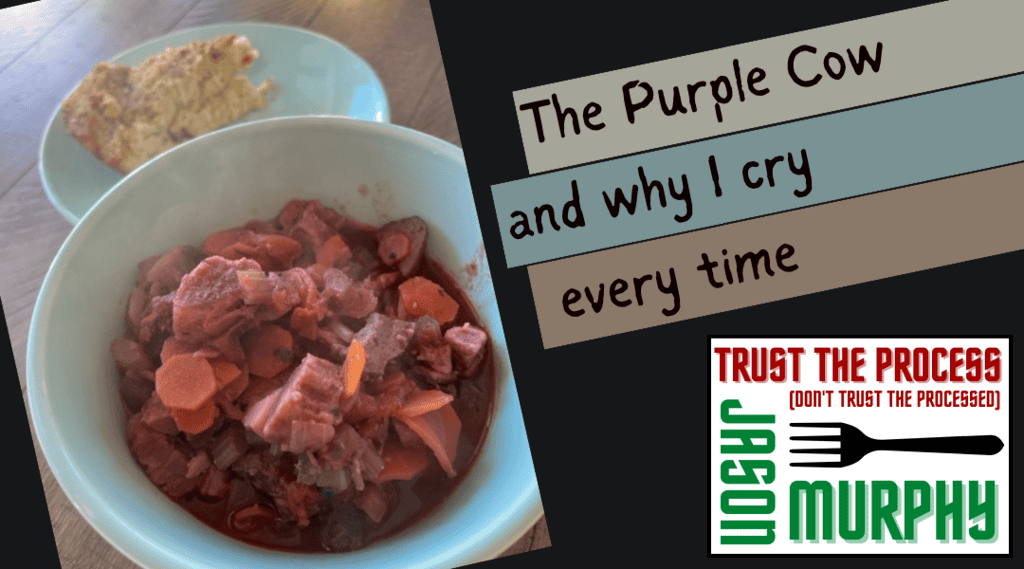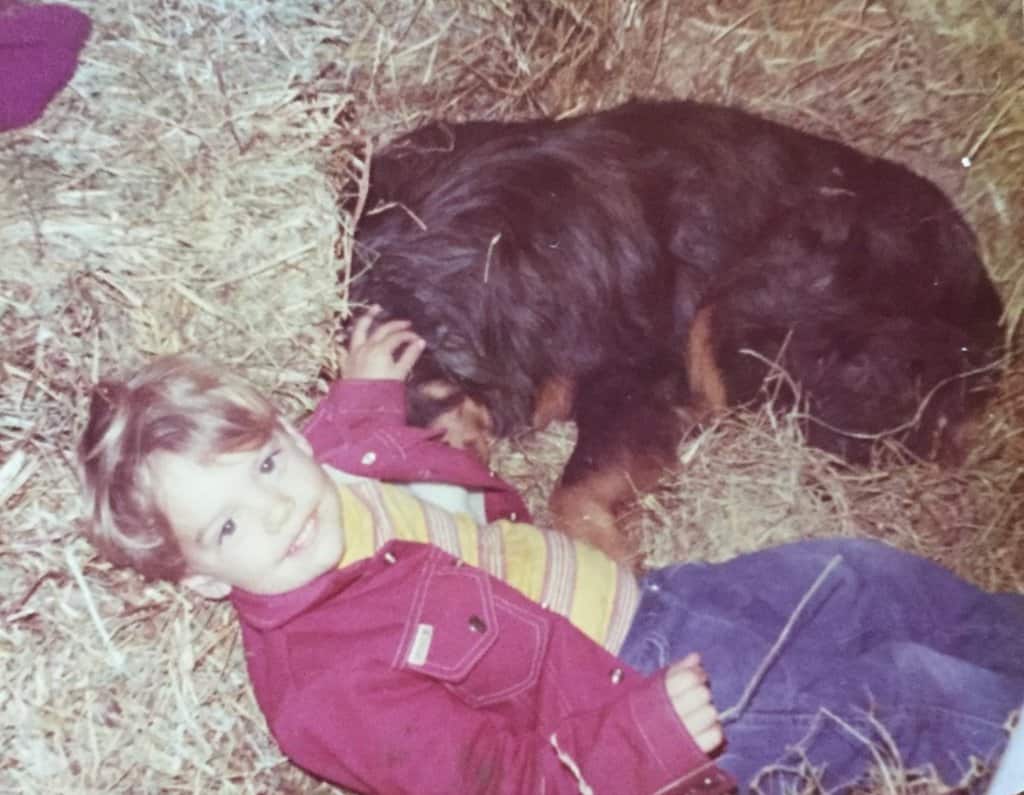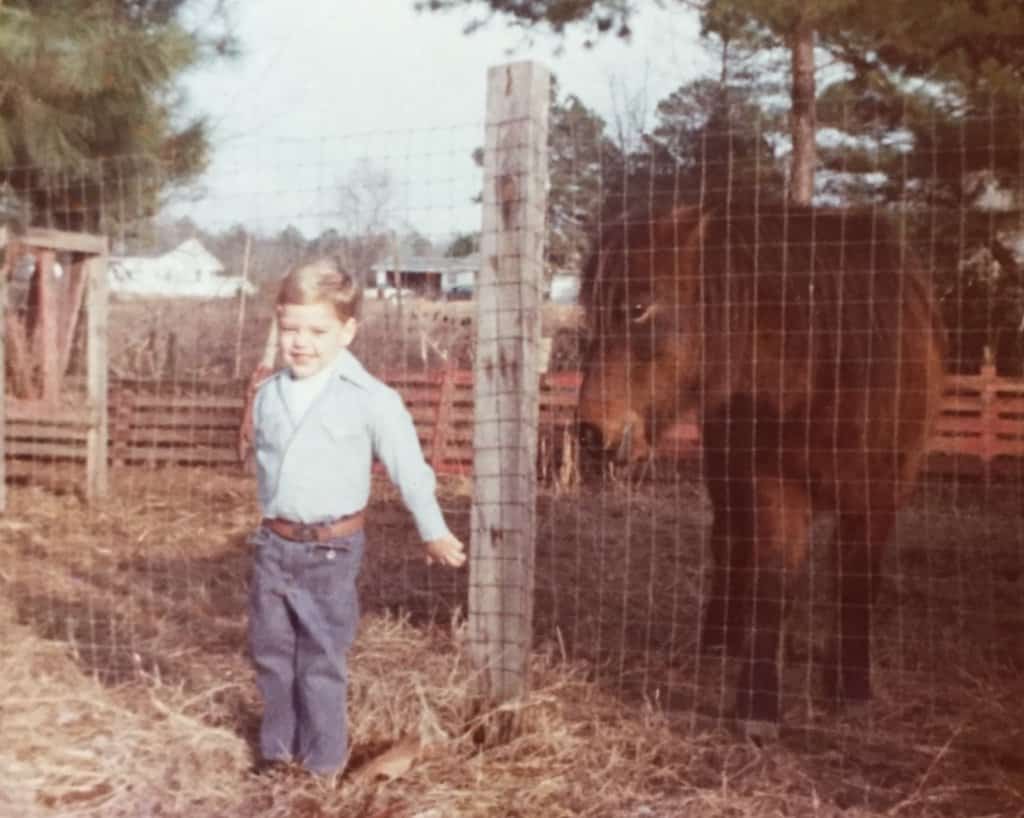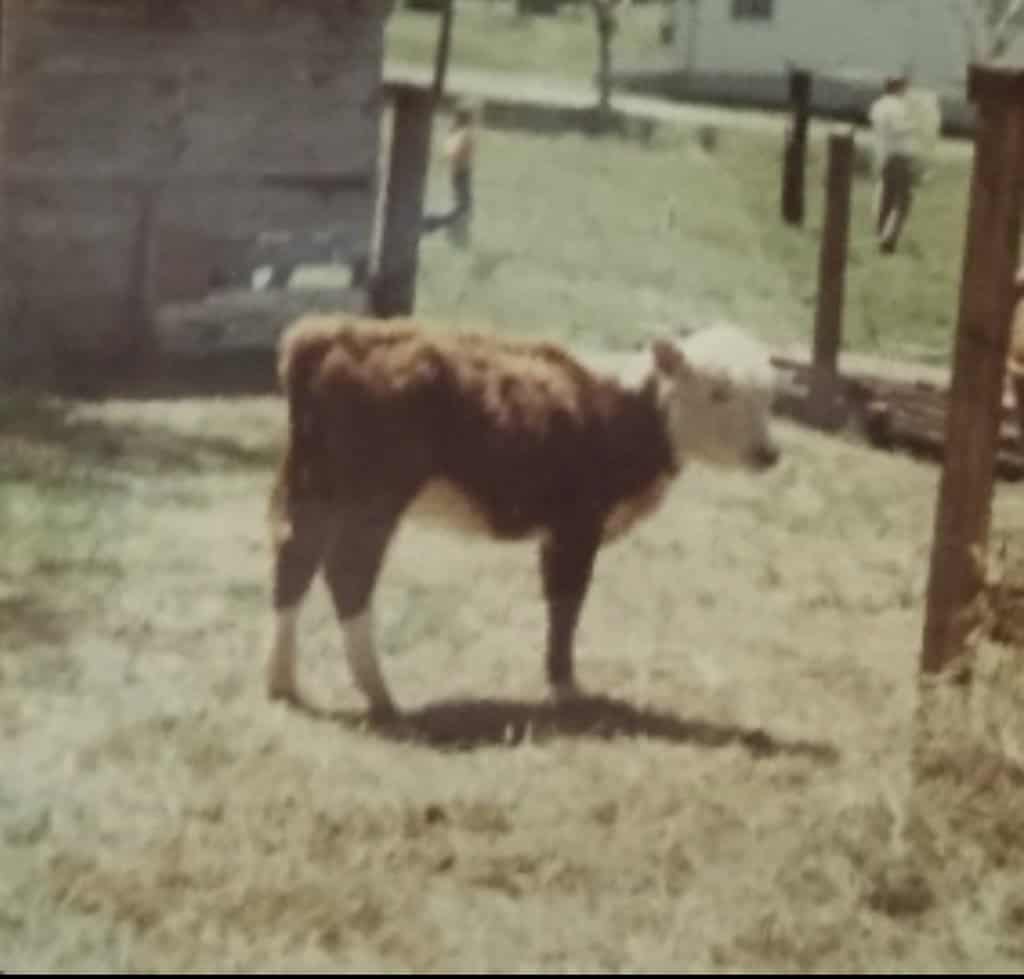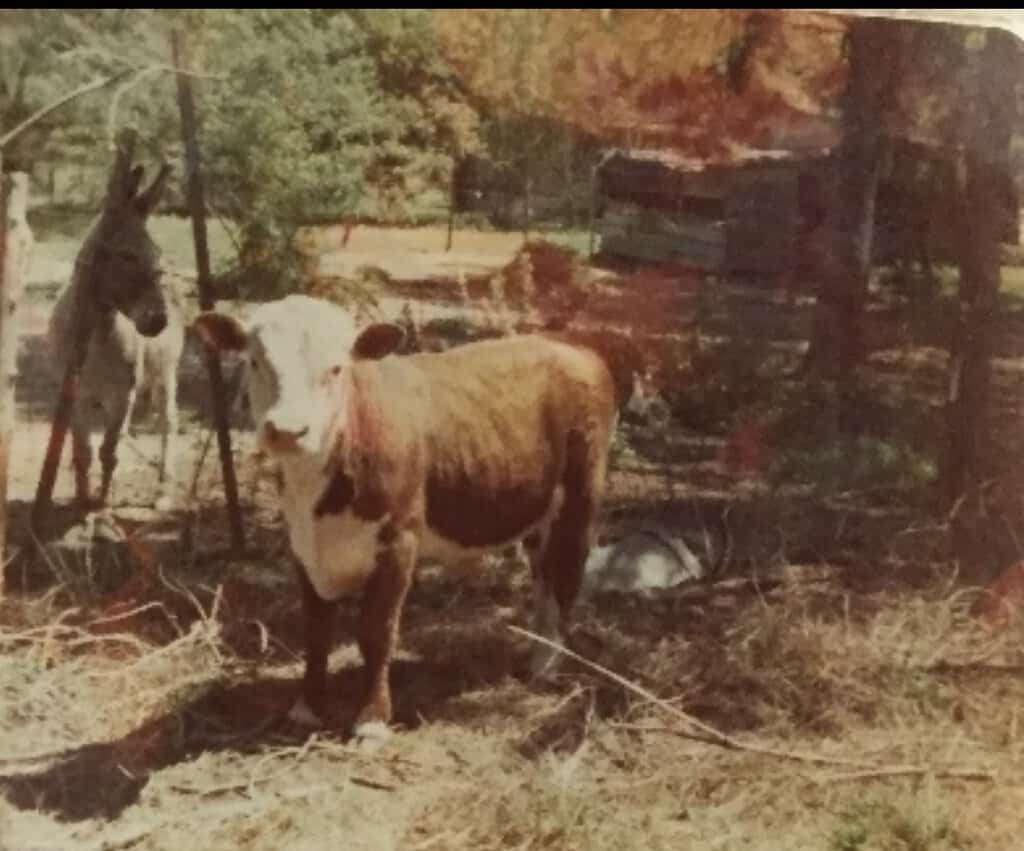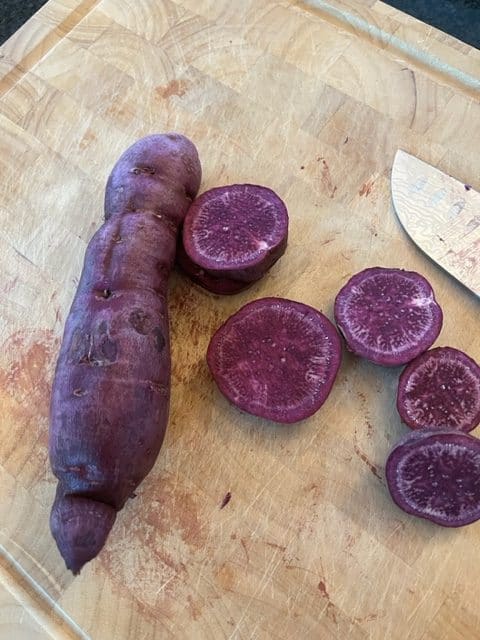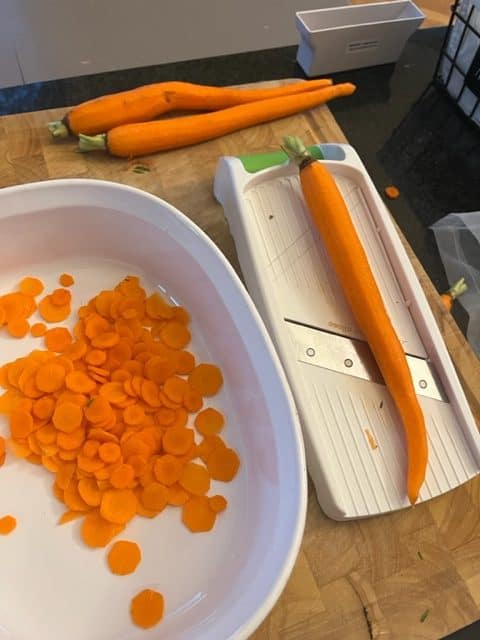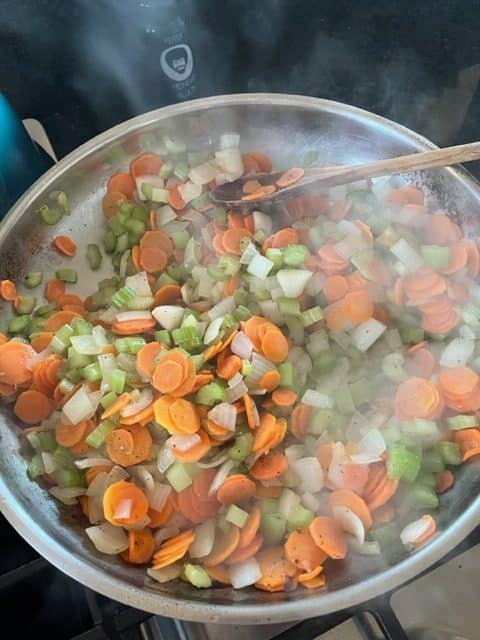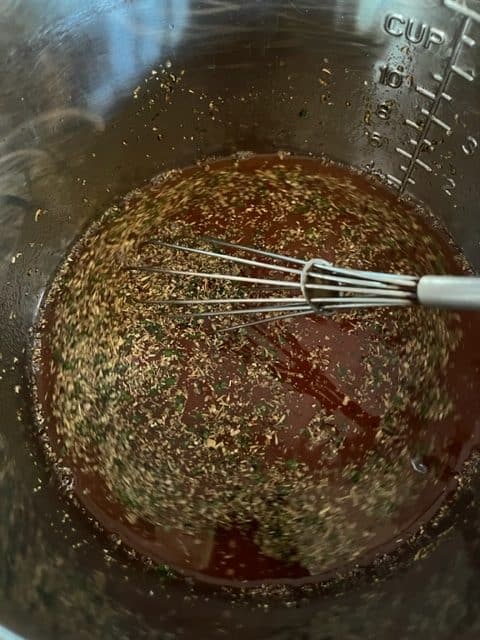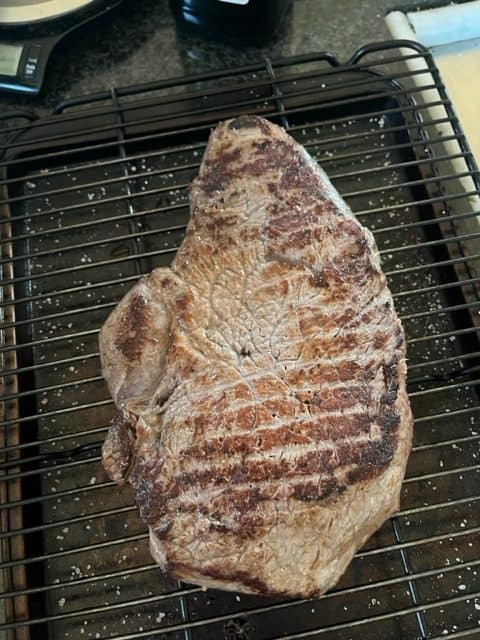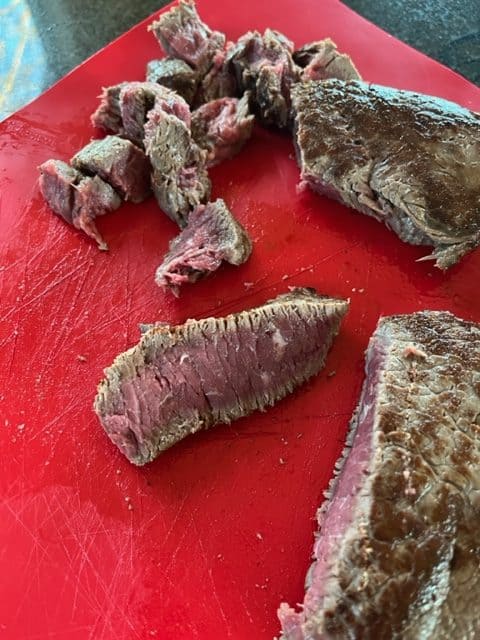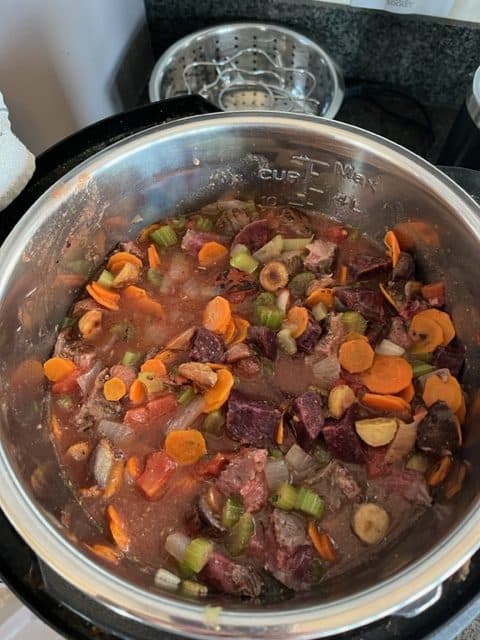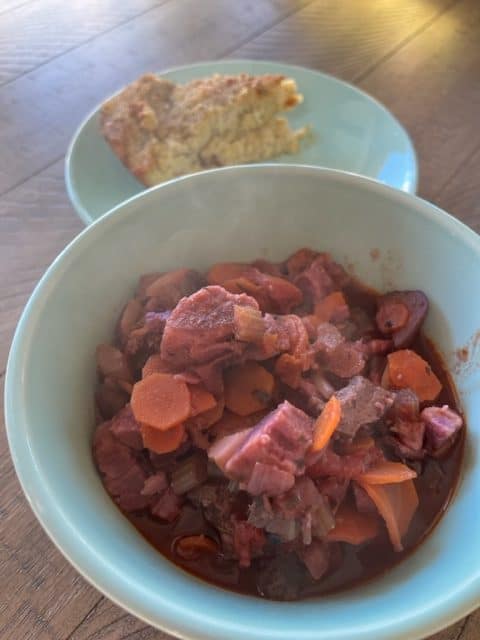Some of you may be familiar with The Purple Cow restaurant. I am not. I don’t avoid it for any food related reasons. I’m sure it’s fine standard fare as burger joints go. No, my reasons are psychological as the name triggers painful childhood memories.
That’s me with our Australian Shepherd, Blue. He was a good dog. No issues there. The problem started when my parents brought home a young steer and told me it was mine to raise. I was four years old, so I thought that meant I had another friend like Blue. They even told me I could think up the name. Proving that I had a firm command on primary colors, I named him Purple. Blue dog, purple cow. Made sense then, makes sense now. I stand by it.
Cute little guy, isn’t he? I told my job seriously, holding the grain bucket while he ate, cleaning the water trough, mucking the stalls. One day after returning from an extended stay at the grandparents, we sat down to eat lunch. Can you guess where this is going?
Yep, grilled burgers. I was starving, and took a huge bite. I noticed as I chewed that both my parents were looking at me with the kind of crazy eyes and smiles that I can only describe as what Batman sees when close quarter fighting with The Joker.
“Do you know what you’re eating?” They asked with a gleeful yet evil tone. I could only assume this was a trick question, but I played along.
“What?” I asked innocently, but I could sense foul play was afoot.
“PURPLE!”
I jumped as they shouted at me. I chewed the mouthful of burger as the horror dawned on me, then I tuned up like a bomb raid siren in London circa 1941. I dropped the burger onto the plate and cried, mourning my friend as they laughed and laughed.
People, little parenting advice for you here. If you are raising an animal to eat, do not tell your kids that it’s theirs, ask them to name it, or encourage them to become fast friends that they vent all their pre-school issues to after a hard day on the playground.
Looking back, I’m surprised the trauma didn’t turn me into a vegetarian. Actually, I would have starved to death in my household, so that’s probably why. Even at fifty years of age now, I still feel highly conflicted every time I have beef, and of all the protein sources, it’s the one I use the least.
When I do, I make sure it’s small farm sourced and grass fed and finished, which is best for both the animal, small family ranchers, and my nutrition goals. I never buy overpriced restaurant steaks, because they invariably give me the fattiest, toughest piece of connective tissue cut they can find, and that drives me crazy. Same goes for beef stew.
Buy a quality steak and cut it yourself. Those pre-packaged slabs of “Stew meat” are just the scraps left over from cutting steaks. Don’t fall for it. I use purple sweet potatoes to add body and it’s crazy good nutrition profile. It gives a purple hue to the broth, which is bittersweet and hurts my heart at the same time that it’s helping it.
Life is full of contradictions. If the weather ever actually turns cold and we can stop mowing lawns in November, a healthy and hearty bowl of beef stew can hit the spot. Just don’t make it out of someone your kid has scratched behind the ears or hugged. I hope you can enjoy it without a box of tissues.
Beef Stew with purple potatoes:
Ingredients:
1 grass fed and finished top sirloin steak
2-3 purple potatoes
1 bunch celery
1 bunch carrots
1 yellow onion
1 carton low sodium beef stock
1 package mixed baby potatoes
3 tsp sea salt, divided
1 tsp dried oregano, thyme, basil, parsley, pepper, onion and garlic powder
1 tsp worcestershire sauce
Olive oil and avocado oil
1 tbsp grass fed butter
2 cans fire roasted tomatoes, drained
Instructions:
The night before, place your steak on a cooling rack inside a cooking sheet. Sprinkle it with Worcheshire sauce, then salt each side with one tsp of sea salt. Set in the fridge uncovered to dry-age overnight. Cut up your purple potatoes and drizzle with olive oil, and hit with a pinch of salt and pepper. Roast at 400 degrees for 20 minutes, then stir and flip, then roast for another 20. Let cool and place in the fridge for the next day as well.
The next morning, take the steak out to rest at room temp for 30 minutes. Dice up your celery, onions, and carrots. I use a slicer for the carrots for uniform thickness. Saute in a large skillet with the butter and another pinch of sea salt and pepper.
Pour the stock in a slow cooker and mix with all the seasonings and drained tomatoes. Add the veggies and the roasted potatoes from the night before:
Get a 12 inch cast iron skillet rocket hot – around 500 degrees. Lightly rub both sides of the steak with avocado oil, then cook for 1 minute per side without moving it. Move back to the rack to rest for 10 minutes, then cut into bite sized chunks:
See the list of all Jason Murphy’s recipes at www.mysaline.com/jason-murphy.



